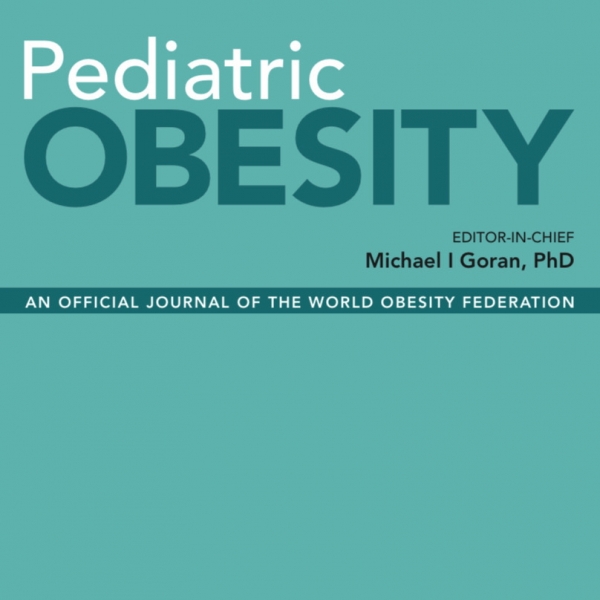Children must be protected from exposure to unhealthy foods on YouTube, suggests Pediatric Obesity study
A study published today in Pediatric Obesity, 'Prevalence of food and beverage brands in “made-for-kids" child-influencer YouTube videos: 2019-2020', suggests that despite a policy banning food advertising on ‘made-for-kids’ channels in 2020 restricting food advertising to children on YouTube, there are still extensive food-related appearances in videos posted by top child influencers.
Emerging evidence of the negative effects from influencer promotion of food-related brands on children’s consumption and attitudes, indicates that additional policies are needed to protect them from potential exposure to unhealthy foods on popular YouTube child-influencer channels.
The need for this study emanated from the numerous concerns that have been raised by child health experts about the negative effects of children's exposure to unhealthy digital food marketing, including advertising and branded product placements on child-oriented videos.
Background
In response to concerns about the lack of policies to protect children from exposure to unhealthy food ads on YouTube and other social media, Google, (YouTube's parent company), implemented a ban in January 2020 on all food and beverage advertising on videos and channels in which children under the age of 13 are the primary audience (i.e. ‘made-for-kids’ videos/channels). Google also agreed to restrict all ads for products that are high in fat, salt or sugar (HFSS) from being shown to children under age 18 in the European Union and the United Kingdom. However, these bans do not cover influencer marketing, which is a newer form of marketing, used by thousands of businesses and seems to be rapidly growing.
This study by Frances Fleming-Milici, Lindsay Phaneuf, and Jennifer Harris, aimed to understand whether food and beverage companies have expanded their use of product placements or integrations within child-influencer videos in response to restrictions on advertisements.
Method
Researchers examined all foods, beverages and restaurants that appeared during YouTube videos posted on the most popular child-influencer channels in 2019 and 2020, as well as video-ads and other promotions in the videos.
All branded and non-branded food-related appearances (i.e. food, beverages, restaurants), ads, promotions, and sponsorship disclosures, were identified and coded, and then 2019 (before restrictions were implemented) was compared to 2020.
All unique food-related appearances were coded as one of three types:
- branded product appearances for food, beverages, and restaurants (i.e. any branded products present in the videos),
- other brand appearances (i.e. other food-related brand mentions, including logos on non-food items and verbal mentions), or
- non-branded food-related appearances (i.e. unpackaged or non-branded packaged foods).


Results
65% percent of videos had at least one type of food-related appearance. Branded food product appearances were found in 38% of videos analysed, other brand appearances in 15%, and non-branded food-related appearances in 51% of videos. Many videos had more than one type of food-related appearance.
There were no significant differences between 2019 and 2020 in numbers of appearances.
In addition, at least one video-ad was shown during 94% of videos and 28% had some type of promotion.
Summary of findings
This study found extensive food-related appearances in videos posted by top child influencers on YouTube channels specifically designated for viewers under the age of 13. Two-thirds of videos examined featured at least one food-related appearance, and 38% contained at least one branded food, beverage, or restaurant product appearance. Of the 592 branded product appearances found, three-quarters featured candy, sweet/salty snacks, sugary drinks, or ice cream.

As of June 2020, total video views for the analysed channels in this study exceeded 155 billion. Therefore, potential exposure to unhealthy branded foods by child viewers appears to be quite high. Moreover, other studies have shown that young children's time on YouTube has increased considerably, and companies' use of influencer-based marketing is projected to increase.
This indicates that more effective policies are needed to reduce the overall presence of branded foods and beverages on child-influencer channels, and protect children from potential exposure to these messages that can harm their health. Government, media, and food industry policies can play a role.

Though still emerging, evidence of the negative effects from influencer promotion of food-related brands on children's consumption and attitudes, together with their widespread use and the frequency that young children visit child-influencer channels, raise numerous public health concerns. Appropriate safeguards must be enacted to protect children from influencer marketing for nutritionally poor food and beverages that can harm their health.
All references in this article from outside sources are cited in the original study titled ‘Prevalence of food and beverage brands in “made-for-kids” child-influencer YouTube videos: 2019–2020’ which can be found at the link below.
Access the full study
The full study is available to read in Pediatric Obesity – an official journal of the World Obesity Federation, which presents the latest research on obesity during childhood and adolescence.
Read Now

Our Journals
Find out more about Pediatric Obesity and our other international, peer-reviewed journals here.
Journals